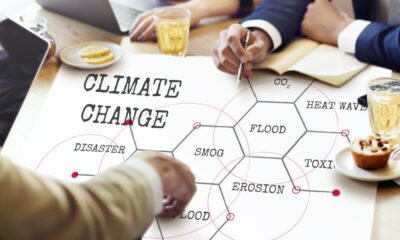

Environment
World needs to sustainably produce 70% more food by 2050
Population increases and changing diets means the world needs to produce 70% more food, as measured by calories, in order to meet demands in 2050.
A new interim United Nations (UN) backed report from the World Resources Institute (WRI) argues that it is possible to close the food gap whilst still creating a more productive and healthy environment.
In 2012, the population stood at around 7 billion and this is projected to increase to 9.6 billion in 2050. More than half of this growth is expected to occur in sub-Saharan Africa. Within this region, a quarter of the population is currently malnourished and population growth will further exasperate this.
In addition, diets are also changing. Globally, the average person is anticipated to consume 23% more calories from livestock in 2050, when compared to 2006. This increase is particularly evident in Asia where the middle class is growing. These types of food are more resource-intensive to produce when compared to plant-based diets.
Even if we eliminated food waste and evenly distributed the food produced in 2009 the world would still need to produce 974 more calories per person per day by 2050.
Food wastage hit the headlines in January after a report revealed that the world was wasting up to half of the food it produced. Blue & Green Tomorrow’s Guide to Sustainable Spending 2013 examined what sustainable food is and how consumers can have a positive impact.
Andrew Steer, president and CEO of the WRI, said, “Over the next several decades, the world faces a grand challenge – and opportunity – at the intersection of food security, development and the environment.”
Producing more food also presents environmental challenges. Currently, agriculture contributes nearly a quarter of global greenhouse gas emissions, uses 37% of landmass, excluding Antarctica, and accounts for 70% of all freshwater withdrawn from rivers, lakes and aquifers.
The report argues that achieving a sustainable food future requires the world to balance closing the food gap, supporting economic development, and reducing agriculture’s environmental impact.
Achim Steiner, UN under-secretary-general and executive director of the UN Environment Programme (UNEP), commented, “To bring about the vision of a truly sustainable world, we need to transform the way we produce and consume our natural resources.”
The report sets out a series of potential solutions to close the food gap by reducing excessive consumption and improving food production. These measures include reducing food loss and waste, improving soil and water management and using degraded land for agriculture purposes.
The final copy of the report will be released mid-2014 and will further measure the contributions of each solution offered.
Further reading:
Campaign aims to end food waste from landfill by 2020
Food waste decreases – but Britons are still throwing away 24 meals a month
MPs launch first inquiry into food security since 2009
World Food Day focuses on creating a sustainable food system


 Environment10 months ago
Environment10 months agoAre Polymer Banknotes: an Eco-Friendly Trend or a Groundswell?

 Environment11 months ago
Environment11 months agoEco-Friendly Home Improvements: Top 7 Upgrades for 2025

 Features9 months ago
Features9 months agoEco-Friendly Cryptocurrencies: Sustainable Investment Choices

 Features10 months ago
Features10 months agoEco-Friendly Crypto Traders Must Find the Right Exchange






























